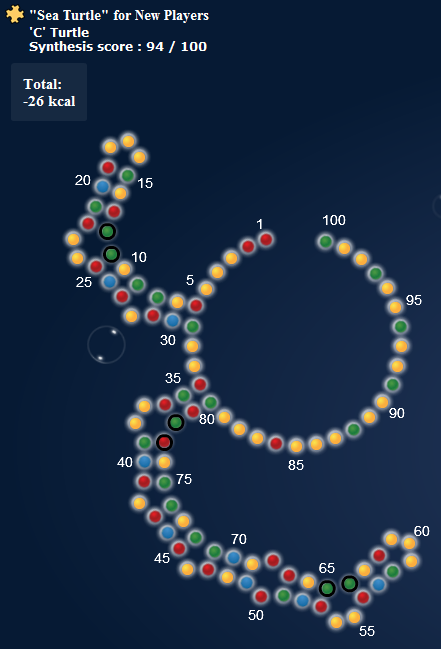I have looked through The thinker lab and see following pattern for successful 2 and 3 nt bulges. The both follow same pattern.
This 2 nt bulge is from Great plot and balanced melting point no GU 1 (89%) by Jennifer Pearl.

This 3 nt bulge is from Stormed puppet solution #3 (89%) by StormedPuppet.

I rotated this one to make it more obvious that the closing GC-basepairs in both size bulges, follows same pattern. Turn the same way when following the reading direction of RNA.
I would like a strategy for 2 and 3 nt bulges that says:
Give + 2 for each 2 and 3 nt bulge that has two GC closing pairs swapped opposite each other. The pairs should follow a specific direction. Following the RNA’s numbered sequence from nr. 1 and up, the green nucleotide should be first. (see direction placement from numbers on the pictures)
Give + 1 for bulges having two GC- closing basepairs
I am most sure about the above part of the strategy. The rest might change a bit when we get more data.
Give -1⁄2 pr each blue lining up after the green nucleotides in the bulge closing, like below.
Give minus -1⁄2 if there is a GC-basepair to the left side of the bulge closing basepairs like below. No matter what way it turns.













